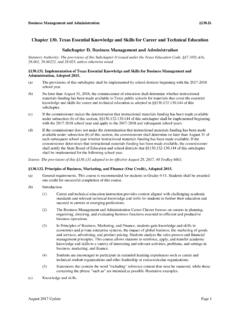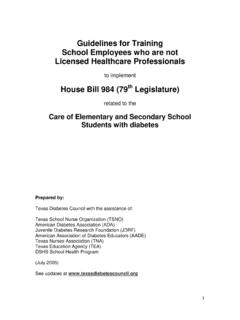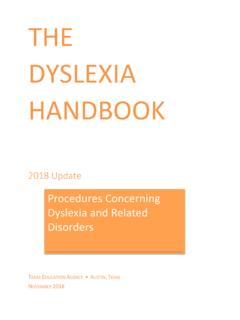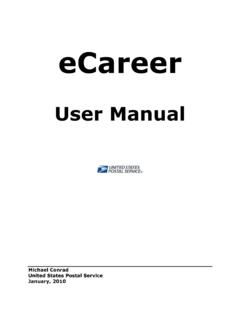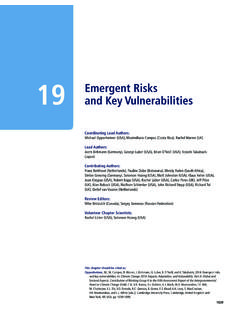Transcription of 19 0110 0017-1 - ritter.tea.state.tx.us
1 Figure: 19 TAC (b) 19 TAC Chapter 110. Texas Essential Knowledge and Skills for English Language Arts and Reading Subchapter B. Middle School Reading/Comprehension Skills - Sixth Grade ( English Language Arts and Reading) Seventh Grade ( English Language Arts and Reading) Eighth Grade ( English Language Arts and Reading) Reading/Comprehension Skills. Students use a flexible range of metacognitive reading skills in both assigned and independent reading to understand an author s message.
2 Students will continue to apply earlier standards with greater depth in increasingly more complex texts as they become self-directed, critical readers. The student is expected to: Reading/Comprehension Skills. Students use a flexible range of metacognitive reading skills in both assigned and independent reading to understand an author s message. Students will continue to apply earlier standards with greater depth in increasingly more complex texts as they become self-directed, critical readers. The student is expected to: Reading/Comprehension Skills. Students use a flexible range of metacognitive reading skills in both assigned and independent reading to understand an author s message.
3 Students will continue to apply earlier standards with greater depth in increasingly more complex texts as they become self-directed, critical readers. The student is expected to: (A) establish purposes for reading selected texts based upon own or others desired outcome to enhance comprehension; (B) ask literal, interpretive, evaluative, and universal questions of text; (C) monitor and adjust comprehension ( , using background knowledge; creating sensory images; rereading a portion aloud; generating questions); (D) make inferences about text and use textual evidence to support understanding; (E) summarize, paraphrase, and synthesize texts in ways that maintain meaning and logical order within a text and across texts.
4 And (F) make connections ( , thematic links, author analysis) between and across multiple texts of various genres, and provide textual evidence. (A) establish purposes for reading selected texts based upon own or others desired outcome to enhance comprehension; (B) ask literal, interpretive, evaluative, and universal questions of text; (C) reflect on understanding to monitor comprehension ( , summarizing and synthesizing; making textual, personal, and world connections; creating sensory images); (D) make complex inferences about text and use textual evidence to support understanding; (E) summarize, paraphrase, and synthesize texts in ways that maintain meaning and logical order within a text and across texts.
5 And (F) make connections between and across texts, including other media ( , film, play), and provide textual evidence. (A) establish purposes for reading selected texts based upon own or others desired outcome to enhance comprehension; (B) ask literal, interpretive, evaluative, and universal questions of text; (C) reflect on understanding to monitor comprehension ( , summarizing and synthesizing; making textual, personal, and world connections; creating sensory images); (D) make complex inferences about text and use textual evidence to support understanding; (E) summarize, paraphrase, and synthesize texts in ways that maintain meaning and logical order within a text and across texts.
6 And (F) make intertextual links among and across texts, including other media ( , film, play), and provide textual evidence.

